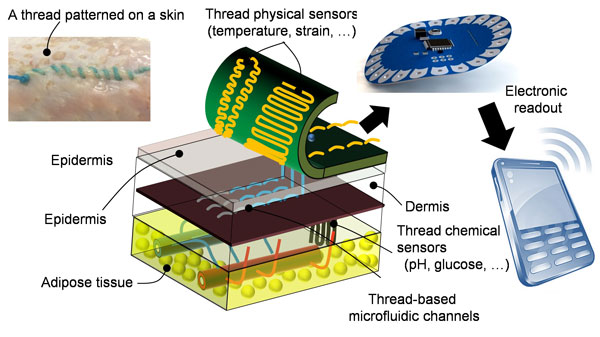
Implantable Device
Engineers at Tufts University are developing a ‘smart’ thread that passes diagnostic data to doctors when wounds are sewn up.
The thread-based diagnostic platform could be the first of a new generation of implantable diagnostic devices and smart wearable systems, researchers say.
“The ability to suture a thread-based diagnostic device intimately in a tissue or organ environment in three dimensions adds a unique feature that is not available with other flexible diagnostic platforms,” said Sameer Sonkusale, Director at Tufts University’s School of Engineering.
The threads are made up of nano-scale sensors, electronics and microfluidics range from simple cotton to sophisticated synthetics. It collects data on tissue health, factors such as pressure, stress, strain, and temperature . The new tech also can check pH and glucose levels which can be used to determine such things as how a wound is healing, whether infection is emerging, or whether the body’s chemistry is out of balance.
The information would then be transmitted wirelessly to a cell phone or a computer where further analysis can take place.

Medical Breakthrough
Researchers say that the smart sutures can be used for surgical implants, smart bandages to monitor wound healing, or integrated with textile or fabric as personalized health monitors and point-of-care diagnostics. The thread is abundant, inexpensive, thin and flexible, and can be easily manipulated into complex shapes. Pooria Mostafalu, one of the study’s authors states”…analytes can be delivered directly to tissue by using thread’s natural wicking properties.”
The researchers do recognize that there needs to be more study into the threads’ long term biocompatability. However, these initial results are recognized as promising. The physical attributes of the thread opens up new possibilities for the monitoring of complex structures. Previously, it was only possible to attach this kind of monitoring to flat surfaces, such as skin.